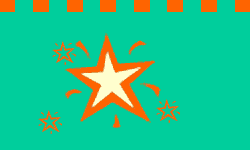Following
is some info on IVF Medications...
There
are a number of different types of medications that may be used to increase the number of eggs which develop to maturity in
women undergoing in vitro fertilization (IVF). The specific medications, the dose of those medications, the times at which
they are administered, and the duration of the treatment vary markedly from patient to patient and are based on their individual
needs.
GnRH
Agonists - Lupron, taken as an injection just below the skin and Synarel, a nasal spray are two agonists. An agonist inhibits your pituitary’s production of FSH and LH. This allows some of the other medications to provide a very even and balanced stimulation to the developing
follicles. Lupron will allow patients to produce greater numbers of higher quality eggs during a given treatment cycle. Additionally,
it prevents a spontaneous midcycle hormonal surge which may result in cycle cancellation.
Antagonists
- Antagon and Cetrotide are antagonists of gonadotropin releasing hormone (GnRH) and are used to prevent premature
ovulation. These medications are given by injection and the duration of treatment is usually three or four days.
Gonadotropins
- Gonadotropins are taken as subcutaneous injections that provide stimulation to the follicles that contain the eggs during
the stimulation phase. Gonal F, Bravelle, Follistim, Pergonal and Repronex are the most commonly used gonadotropins.
Gonal
F, Follistim, or Fertinex
These
are highly purified preparations of follicle stimulating hormone (FSH) which are taken as subcutaneous injections. The FSH
provides the critical stimulation to the follicles containing the eggs that are developing during the stimulation phase of
the cycle.
Repronex
A
highly purfiied preparation of follicle stimulating hormone (FSH) and lutenizing hormone (LH) which is taken as a subcutaneous
injection. It is similar to Gonal F, Follistim and Fertinex but it also contains some LH. This may allow some (but not all)
patients to respond somewhat faster and produce somewhat higher estrogen levels.
hCG
- hCGs are taken as an intramuscular injection and are used to induce the final maturational changes in the eggs and prepare
them for retrieval. The most commonly prescribed hCGs are Pregnyl, Profasi and Novarel.
NOTE: After receiving this medication you will have a positive pregnancy test for the following 10-12 days (whether
you are pregnant or not). Do not be misled by the results of a home pregnancy test!
Doxycycline
- Doxycycline, an antibiotic administered in pill form, which is a tetracycline derivative given to the male partner during
the wife’s stimulation cycle. This antibiotic is given orally and is used to reduce the low levels of bacteria that
may be found in the semen (even in men without symptoms or any other evidence of infection) and which may compromise the performance
of the sperm during an IVF cycle. It is also given to the female partner to reduce the risk of infection following aspiration
of the follicles at the time of egg retrieval.
Medrol
- Medrol is a steroid hormone given daily, typically for a period of four days during the cycle, to transiently suppresses
immune function to assist pre-embryo implantation.
Progesterone
- Natural progesterone normally taken as a daily intramuscular injection beginning 2 days following egg retrieval and continues
until the placenta is making adequate amounts of progesterone. (Progesterone injections will be discontinued following your
serum pregnancy test if it is negative). Depending on the protocol, progesterone can also be given in the form a vaginal gel
(Crinone) or suppositories or pills (Prometrium) given vaginally.

